Since it’s half-term this week, we thought it was time to post some more reviews of products we love. This is the first of three reviews this week of products we have been lucky enough to be sent to review. Today, the Colour Match puzzles by Orchard Toys.
This is a very simple set of puzzles. There are 12 puzzles altogether and each has 5 pieces – one with a block of colour on, one with the word on, and 3 larger pieces, each with an item which is that colour. They are cleverly designed so that, although they look the same, you can’t put the pieces from two different sets together – eg you can’t attach the orange pumpkin to the black spider. Also, you can put the pictures in each set in any order, or not use all of them if you want to. A very straightforward game, and a great example of a hugely versatile one which can be used to target lots of different language skills.
Here are a few of the things that you could do with this game:-
Early language ideas
- This makes a great set of simple vocabulary pictures. Most children love the bright, clear pictures which makes them ideal for learning simple vocabulary or signs. You may want to pick and choose the ones you use a bit, as some of the vocabulary is more challenging than others eg if your child only has a few words, you might want to stick with fish, banana and milk, moving on to more complex words like pumpkin, ladybird and witch later! You can use the puzzle pieces to do any vocabulary games – post them in a box, hide them round the room and look for them, pull them out of a bag and name them… There are lots of possibilities.
- If you pull out a few of the pictures, you can use them for symbolic noises. Ask the child what noise the animal/vehicle makes or just make the sounds lots yourself while you’re doing the jigsaws.
- Obviously, you can use them for colour. You can match the pieces for each colour and talk about them as you go. You could use them as a comprehension activity (ask the child to find “something white”) or as an expressive activity (ask them what colour the item is as you put the jigsaws together – you might want to just use a few of the jigsaws to start with).
- You can also use them to work on 2-word phrases. Play some of the vocabulary games and this time, ask the child to say two words about each picture eg “red strawberry” or “blue bird”.
- You can use them to target same and different. If you are going to do this, I would turn all the pieces over to start with and use them upside-down. Then you can choose a picture and ask the child to find one “the same” or one that’s “different”. When they have a better understanding you can use the jigsaws the right way up and ask for one “the same colour”, but this is more difficult.
Harder language ideas
- You can use them for naming in categories. I did this with my daughter when we tested out the game together. With each jigsaw we found the pictures upside-down and tried to guess what the items would be. EG what’s yellow? We guessed what might be there and then turned them over to see if we were right. There are a few examples which are not obvious things you would think of for that colour (eg a crab for pink) but she found this funny. Guessing is hard – even I found it hard to guess all 3 items sometimes, but you can just have fun with it and think about things which are different colours. You might then want to combine this with the next idea.
- You can take turns to describe a picture for another person to guess. If the child can’t think of more than one thing that is red for example, you could describe the other pictures and see if they can guess. Or get the child to describe it to you and you can guess the items.
- You can also sort the puzzle pieces into other categories – eg animals, food, things that are small, things that are big etc.
- Finally, these puzzles lend themselves really well to narrative (story-telling) work. Ask the child to choose one of the completed puzzles and put all 3 items into a story. They can use them in any order. They will be silly stories, but it’s a great way to encourage a child to put several sentences together and to use imagination. Eg for the brown one – once there was a teddy bear. He was hungry and wanted something to eat. The dog came over and the teddy bear said “can I ride on your back?” The dog took him into the kitchen where there was a big box of gingerbread men. The dog and the teddy bear ate them all up and then they felt sick.
Loads of language ideas from a simple set of puzzles! Because it’s so versatile, this is one of my favourite Orchard Toys games! You can buy it for £7.50 here.
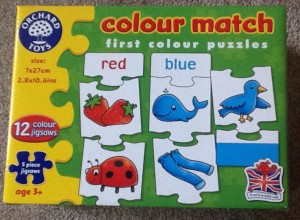
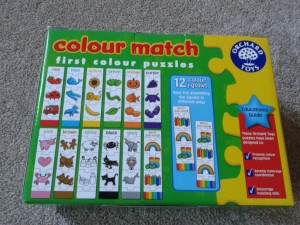
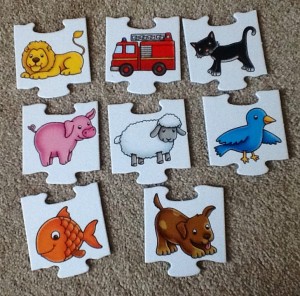
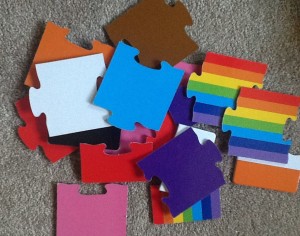
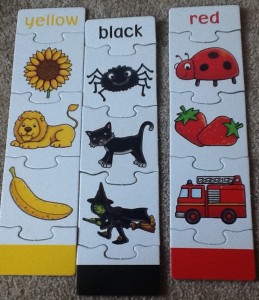

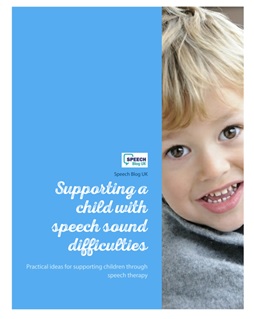

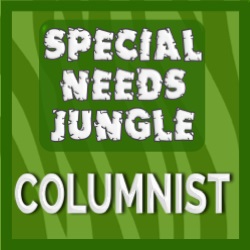


Leave a Reply